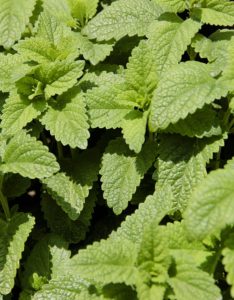Some links in the post are affiliate links and I get a commission from purchases made through some links found in the post.
The citronella plant is hard to miss, thanks to its delightful citrusy smell. This aroma is said to repel mosquitoes.
For this reason, this plant has also earned the name ‘mosquito plant’ in the past few decades.
And if you ask some people, that is the primary motivation behind having this plant in their homes- to keep the pesky insects away.
Today, we will not focus on whether this belief holds any water- a little mystery goes a long way; does it not? Instead, we will focus on how you can keep your Citronella plant growing over the winter.
Also, what happens if your climate is too harsh on this supposed mosquito plant? Let’s find out:
What Temperatures can Citronella Plants Tolerate?
A citronella plant will do well in temperature ranges between 59 to 69 degrees Fahrenheit, (15 to 21 degrees Celsius).
Any temperature lower than this can affect its growth so in colder climates it may have to be moved inside to stop the risk of frost.
As such, if you live in a cold area, you might want to consider some of the options we will later cover regarding winter care.
If you’re enjoying this article, check out our article on how to fix a leggy wandering Jew plant.
How to Care for Your Citronella Plant Over Winter
The care you give to your citronella plant over the cold winter months comes down to the climate in the region you live in.
In Cold Climates
Moving the plant indoors
Citronellas are unique houseplants and are sure to add a touch of beauty to any space.
Thus, if you feel that the plants cannot withstand the climates in your area (lower than the ranges indicated above), transplanting would be a good idea.
All you have to do is ensure that you place the plants towards a west or south-facing window where they can get enough light.
Also, this exposure ensures that the plants grow straight and do not develop leggy and spindly stems.
Please note that these plants are quite sensitive to drafts, more so the cold ones during winter.
As such, please place them in a sheltered area. Without these efforts, the plant will go into forced dormancy. Sigh.
Process
First, you need to inspect the plants before the first frost to ensure they are free of pests and diseases.
Overwintering diseased plants would not have satisfactory results, and you could end up losing the plants.
Look out for signs of infestation, e.g., spider mites and aphids. If the plant is unhealthy, leave it as it is and allow it to go dormant till the spring.
Next, you need to dig up the healthy plants in preparation for potting. For each plant, prune the citronella to a third of its size before placing it in a pot.
Make sure that you use a potting mix for overwintering, as opposed to using garden soil.
The latter tends to be heavy and does not offer sufficient aeration and drainage necessary for indoor planting.
Water the soil adequately after repotting and allow the soil to dry out. Leave the pots outside until just before winter begins.
You can then move the plants indoors to give them enough time to adjust to the new environment as winter begins.
During winter, you will need to pinch the shoots a few times to promote branching and ensure that the plants grow healthy.
The plants will do well indoors, provided they have adequate lighting and water.
When frost clears, you should fertilize the soil with light inputs to give them a headstart before moving them outdoors.
The beauty of this technique is that the plants tend to be much larger than what you would find in most nurseries during the spring.
You will be in awe of how large your plants are and the beauty of the blooms in your space.
Using Cuttings
If you would like to have more citronellas in your garden, come next season, this is a great move.
You will be happy to note that these plants root readily from cuttings. Plus, these take up less space, which works great for people who are short on space.
Process
 Select a 4-inch portion of the plant’s green stem above the node. Please note that you should not use old or woody stems for this.
Select a 4-inch portion of the plant’s green stem above the node. Please note that you should not use old or woody stems for this.
On this cutting, make another cut on the same side you cut below the node.
That should leave you with a plant that measures four inches. Remove all the flowers and leaves on the plant, save for two sets of leaves at the top.
Dip the bottom two inches of the stem in a rooting hormone before sticking it into a rooting medium.
You can work with perlite, coarse sand, or any other medium that can encourage good rooting.
If you wish, you can have several cuttings in one pot or separate them at this time.
The pots should have adequate drainage to allow the soil to remain damp as opposed to being wet during the cold months.
Also, the plants should be in a humid environment. You do not have to increase the room’s temperature for this.
You can as well wrap a plastic bag over the cuttings and secure it on the container.
Move the pot to a space with access to bright light that is not directed at the cuttings. Keep watering as needed to keep the rooting medium moist during the rooting phase.
Rooting should take place in the next five to eight weeks. Allow the roots to reach 1 inch in length before moving the plants to a 4-inch container.
Once again, the pot should be well-draining, only that this time, you should use potting soil. You can now move the pots to a sunny location and keep watering to encourage more growth.
Pinching the shoots now and then will promote branching and healthy growth. By spring, you should have enviable citronellas.
In Hot Climates
In Dormancy
Here is an exciting thing about a citronella plant – they can survive over winter without being in soil. How great is that?
All you need is to store them properly, and they will make it through the dry times ahead. This adaptability is all thanks to their succulent stems.
Process
Start by digging up the plants before frost and shaking off the soil from their roots. Place the plants in open paper bags.
Alternatively, you can hang them upside down from the roof! Here is the catch, though – the plants should remain in cool and dark conditions during winter.
Temperatures should be in the ranges of 45-50 F. Once every month; you should take the plants from storage and dip their roots in water for two hours.
The stems should remain solid, though most of the leaves will fall off. If the stems appear soft and shriveled, you should discard them as they will not make it through the winter.
Once the cold months have passed, you can pot the healthy plants in potting mixes, ensuring that you adequately water them.
Cut off any parts of the stems that appear to be dead to allow room for new growth. Ensure the plants are in a sunny location where they can thrive.
Please note that it takes a few weeks for dormant plants to start growing again. After this, they should carry on as usual.
In The Garden
Living in a hot area means that you do not have to deal with harsh winters. Well, this works in your favor, given that you can leave the plants in the garden during the cold months.
All you need to do is to cut them back and mulch them adequately during the fall. For added protection, you can invest in horticultural fleece to keep them safe from cold drafts.
The plants can survive winters as cold as 20 ℉ in such a state. However, where the temperatures tend to be lower than this, you are better off moving them indoors or using cuttings.
You may also like: how to fix your oxalis (purple shamrock) problems.
Do Citronella Plants Come Back Year After Year?
Your plants should do well each year, provided you follow the care practices above.
Each time winter approaches, rush to protect the plants and overwinter them as needed. Come spring, your citronellas should be back to their blooming nature.
Can you Collect Seeds From Citronella Plants?
Yes. If you would rather skip the processes above, you can do with seeding as opposed to overwintering.
All you need is to collect seeds from the plants and keep these in cool and dry conditions.
Once the last frost passes, you can sow the seeds in damp soil, ensuring that they get at least 6 hours of sunlight a day.
Alternatively, you can seed the plants six weeks before the last frost to enable you to have blooms in the spring.
Seeding is an easy propagation method, and once the seedlings are big enough to survive the outdoors, you can move them to large containers or the garden.
Final Thoughts: How to Care for Your Citronella Plant Over Winter
 There is no reason why your mosquito plant should bear the brunt of the cold months. You can save it by overwintering it, based on your region’s climate.
There is no reason why your mosquito plant should bear the brunt of the cold months. You can save it by overwintering it, based on your region’s climate.
Also, keep in mind that the overwintered plant will only be as healthy as your care practices.
Thus, you should also include measures such as fertilization, pruning, and watering to prepare the plant for overwintering. That said, happy gardening!
Before you go, here are some more related articles I encourage you to read below to help solve more of your gardening issues:
How to use Baking Soda to Grow Hydrangeas
How to Treat a Hoya with Fungal Leaf Spots
How and When to Prune Potentilla
Written by: Daisy Njeri


